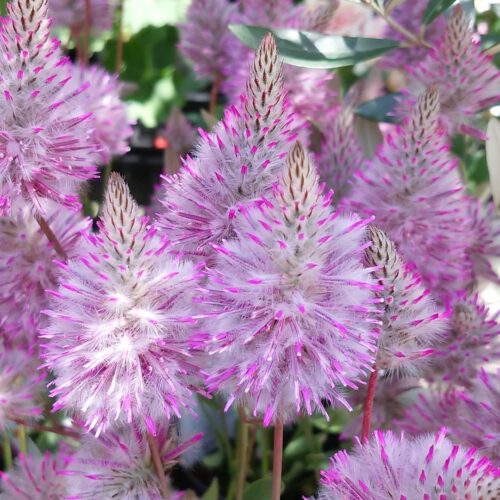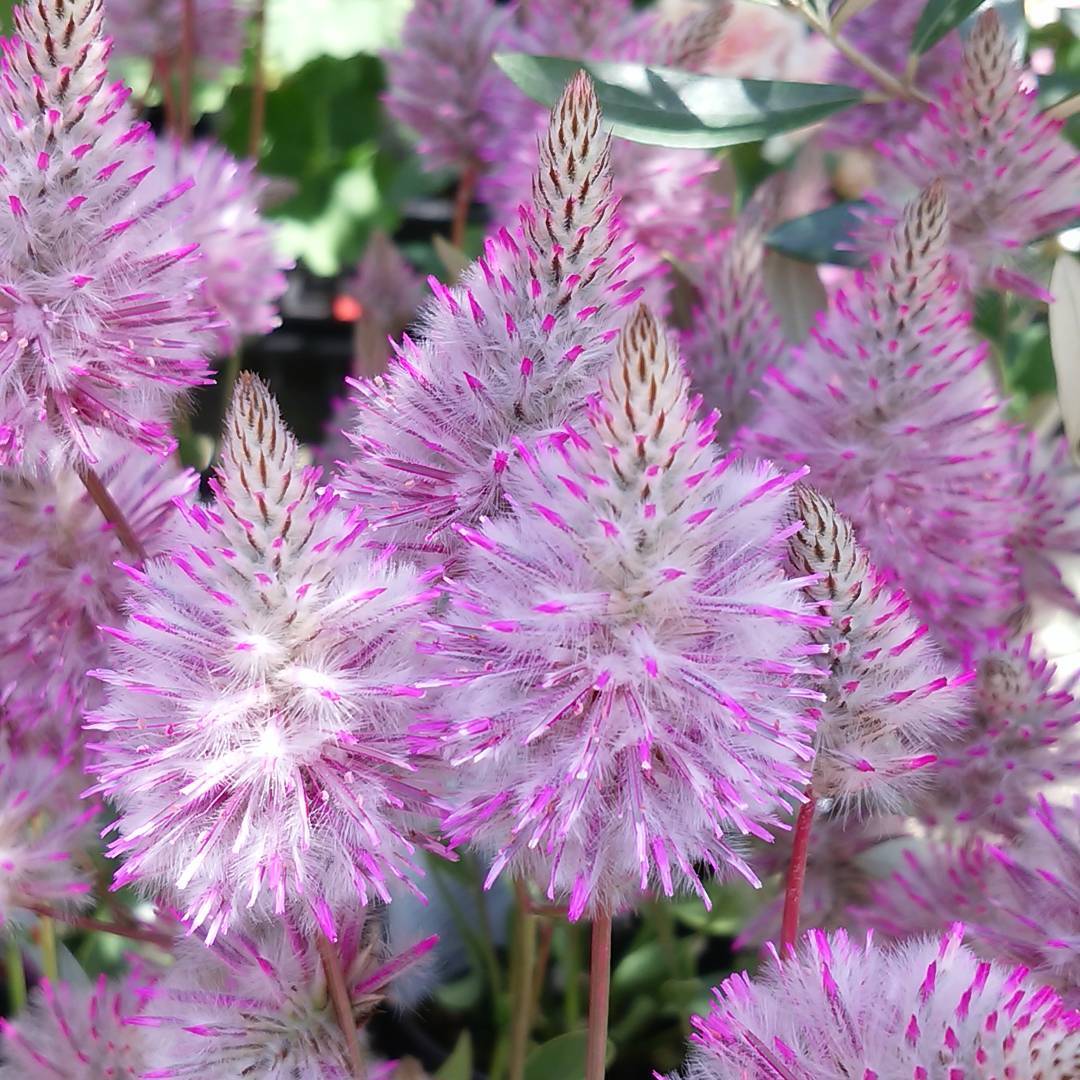Ptilotus exaltatus is a perennial that is treated as an annual in cool areas. It makes a good cut flower and looks great in desert gardens.
Also known as Tall Mulla Mulla, Pink Mulla Mulla, Ptilotus (Ptilotus exaltatus) stands out for its eye-catching, feathery, bottlebrush-shaped blooms in a remarkable silver-pink shade. This plant is among the largest and most unusual of the over one hundred species in the broader Ptilotus genus.
Ptilotus exaltatus

It is native to the dry, arid plains of Australia in Queensland, Victoria, New South Wales, Northern Territory, and South and Western Australia. The ptilotus produces long-lasting blooms that look soft and fuzzy but are actually quite firm and bristly to the touch. This unique texture allows the blooms to withstand a range of weather conditions. The ptilotus, which resembles celosia, is also part of the Amaranthaceae family.
Ptilotus exaltatus features thick, fleshy, silvery-green ornamental foliage. The soft, plume-like flowers, approximately four inches tall, gently cascade over the leathery leaves. The plant can reach up to 1-2 feet tall.
Though a perennial by nature, this herbaceous plant is often grown as an annual. It works well as an accent piece in containers, either as a standout specimen or as part of a broader collection of similar blooms to create an attractive display. Pink Mulla Mulla can bring a soft, cottage-garden charm to your landscape, and its blooms are commonly cut and dried for use in decorative arrangements.
USDA Zones: 2-11
Propagating Ptilotus exaltatus
Ptilotus exaltatus is usually propagated from seeds. Due to its abundant flowering and quick shift from vegetative to reproductive growth, propagating it through cuttings can be challenging. However, it’s possible if you time it right—aim for the warmest part of the year when humidity is at its peak for the best results.
Growing in Containers
For growing Ptilous plants in pots, use well-draining soil, and water the plant when it dries out completely.
Because Ptilotus can grow quite large in its natural habitat—sometimes resembling weeds—breeders have developed more compact varieties suitable for containers and smaller garden spaces. These compact types retain their distinctive beauty while offering greater versatility for different growing environments.
Ptilotus Varieties
Among the various Ptilotus species, Ptilotus exaltatus stands out for its relative rarity, greater height, and increased cultivation difficulty. Other noteworthy Ptilotus varieties include:
- Ptilotus spathulatus: This variety is grown as a groundcover
- Ptilotus nobilis: It is popular for flowing, soft blooms
- Ptilotus manglesii: You can see eye-catching, rose-hue-tipped blooms on this variety
Ideal Growing Conditions for Ptilotus Exaltatus
Light
Ptilotus exaltatus prefers full sun exposure; for fine growth, it needs at least 6-8 hours of direct sunlight.
Soil
Use loose, thin, sandy, and well-drained soil. Before planting, amend the soil with organic matter.
Water
This drought-resistant plant hardly asks for watering except in serious drought-like conditions.
Temperature and Humidity
These heat-loving plants are ideal for those living in hot, dry regions. They’re commonly grown in Mediterranean, tropical, or subtropical desert climates, and they can also thrive in temperate areas with proper care. It’s important to protect Ptilotus from heavy frost, especially when they’re young and more vulnerable to cold temperatures.
Ptilotus Exaltatus Care
Fertilizer
Ptilotus exaltatus is generally low-maintenance and doesn’t typically require extra fertilization, as long as it’s planted in average to good-quality soil. However, if you’d like to boost its growth rate, you can apply a general-purpose fertilizer. This can help the plant flourish and produce more vigorous blooms.
Pruning
As Ptilotus exaltatus matures, its flowers can start to look ragged. To keep the plant looking fresh and attractive, you can deadhead any faded or spent blossoms. This practice promotes new growth and helps maintain the plant’s overall aesthetic.



